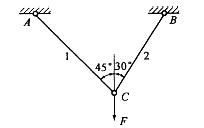考试:军队文职人员招聘
问题:
Joy and sadness are experienced by people in all cultures around the world, but how can we tell when other people are happy or?despondent??It turns out that the expression of many emotions maybe universal, Smiling is apparently a universal sign of friendliness and approval. Baring the teeth in?a hostile way, as noted by Charles Darwin in the nineteenth century, may be a universe sign of anger. As the originator of the theory of evolution, Darwin believed that the universal recognition of facial expressions would have survival value. For example, facial expressions could signal the approach of enemies (or friends) in the absence of language. Most investigators?concur?that certain facial expressions suggest the same emotions in a people. Moreover, people in diverse cultures recognize the emotions manifested by the facial expressions. In classic research Paul Ekman took photographs of people exhibiting the emotions of anger, disgust, fear, happiness, and sadness. He then asked people around the world to indicate what emotions were being depicted in them. Those queried ranged from European college students to members of the Fore, a tribe that dwells in the New Guinea highlands. All groups including the Fore, who had almost no contact with Western culture, agreed on the portrayed emotions. The Fore also displayed familiar facial expressions when asked how they would respond if they were the characters in stories that called for basic emotional responses. Ekman and his colleagues more recently obtained similar results in a study of ten cultures in which participants were permitted to report that multiple emotions were shown by facial expressions. The participants generally agreed on which two emotions were being shown and which emotion was more intense. Psychological researchers generally recognize that facial expressions reflect emotional states. In fact, various emotional states give rise to certain patterns of electrical activity in the facial muscles and in the brain. The facial-feedback hypothesis argues, however, that the causal relationship between emotions and facial expressions can also work in the opposite direction. According to this hypothesis, signals from the facial muscles (“feedback”) are sent back to emotion centers of the brain, and so a person’s facial expression can influence that person’s emotional state. Consider Darwin’s words: “The free expression by outward signs of an emotion intensifies it. On the other hand, the repression, as far as possible, of all outward signs softens our emotions.” Can smiling give rise to feelings of good will, for example, and frowning to anger? Psychological research has given rise to some interesting findings concerning the facial-feedback hypothesis. Causing participants in experiments to smile, for example, leads them to report more positive feelings and to rate cartoons (humorous drawings of people or situations) as being more humorous. When they are caused to frown, they rate cartoons as being more aggressive. What are the possible links between facial expressions and emotion? One link is arousal, which is the level of activity or preparedness for activity in an organism. Intense contraction of facial muscles, such as those used in signifying fear, heightens arousal. Self-perception of heightened arousal then leads to heightened emotional activity. Other links may involve changes in brain temperature and the release of neurotransmitters (substances that transmit nerve impulses.) The contraction of facial muscles both influences the internal emotional state and reflects it. Ekman has found that the so-called Duchenne smile, which is characterized by “crow’s feet” wrinkles around the eyes and a subtle drop in the eye cover fold so that the skin above the eye moves down slightly toward the eyeball, can lead to pleasant feelings. Ekman’s observation may be relevant to the British expression “keep a stiff upper lip” as a recommendation for handling stress. It might be that a “stiff” lip suppresses emotional response-as long as the lip is not quivering with fear or tension. But when the emotion that leads to stiffening the lip is more intense, and involves strong muscle tension, facial feedback may heighten emotional response.The author mentions “Baring the teeth in a hostile way” in order to _____.
A:differentiate one possible meaning of a particular facial expression from other meanings of it
B:support Darwin’s theory of evolution
C:provide an example of a facial expression whose meaning is widely understood
D:contrast a facial expression that is easily understood with other facial expressions
答案:
解析:
相关标签:
英语言文学(军队文职) 文职 语言文学 experienced 军队 cultures











